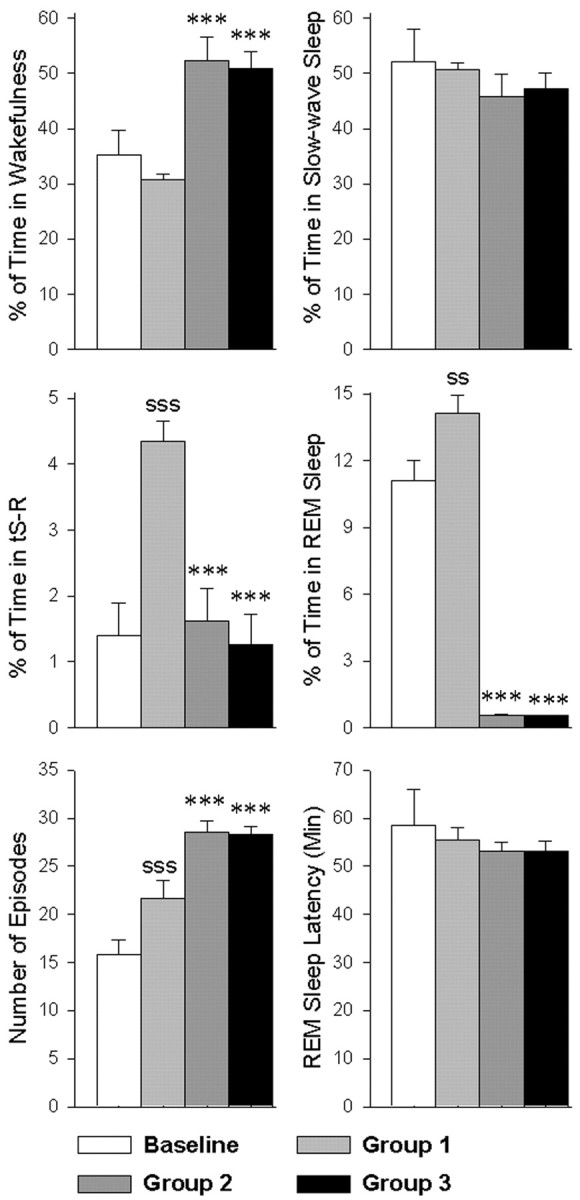Figure 2.

The effects of two-way active avoidance-learning trials and selective REM sleep deprivation on wakefulness, slow-wave sleep, tS-R, and REM sleep over a 6 hr period. Baseline (n = 30; mean ± SE): 6 hr of undisturbed sleep-wake recordings after a microinjection of control saline (100 nl) in the P-wave generator; group 1 (n = 10; mean ± SE): training trials followed by microinjection of control saline (100 nl) into the P-wave generator and then 6 hr of undisturbed sleep-wake recordings; group 2 (n = 10; mean ± SE): training trials followed by microinjection of control saline (100 nl) into the P-wave generator and then 6 hr of sleep-wake recordings while animals were selectively deprived of REM sleep; group 3 (n = 10; mean ± SE): training trials followed by microinjection of carbachol (50 ng in 100 nl) into the P-wave generator and then 6 hr of sleep-wake recordings while animals were selectively deprived of REM sleep. Post hoc Scheffé F test: “S” represents the comparison between baseline and group 1 to evaluate the effects of learning trials, and asterisk represents the comparison with group 1 (control group) to evaluate the effects of REM sleep deprivation in group 2, and the combination of REM sleep deprivation and carbachol microinjection into the P-wave generator in group 3. SS: p < 0.01; SSS or ***p < 0.001.
